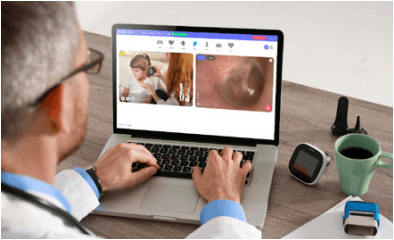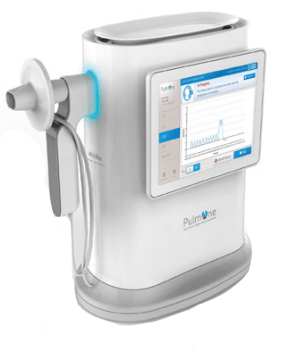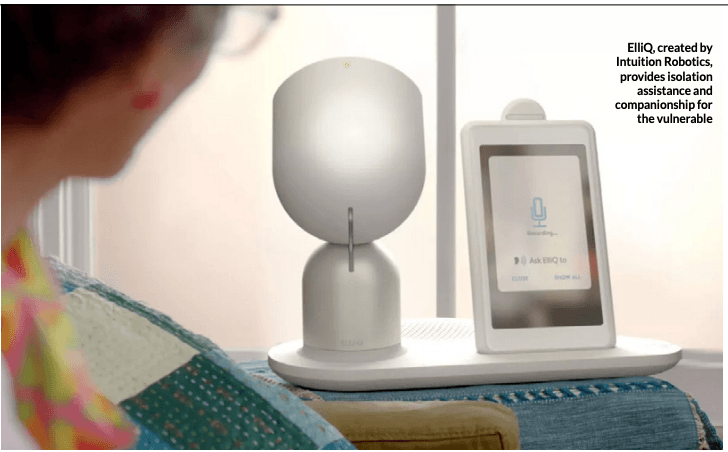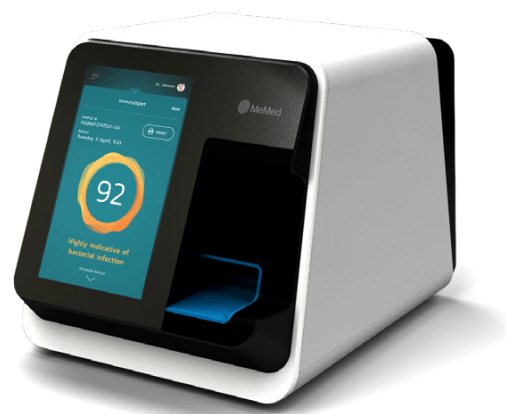Greater agility, better infection containment, fast diagnostics and telemedicine: Meet your healthcare providers post Covid-19
When the coronavirus surfaced in China in December 2019, it set off a domino effect worldwide – with the number of active cases snowballing rapidly.
By February 2020, the daily increase in people falling ill with Covid-19 was in the thousands and -though international borders closed down and households went into lockdown – active cases skyrocketed in June to approximately 130,000 new cases a day, according to Worldometer.
Major global cities from New York, to London, and Mumbai found their healthcare systems direly overwhelmed by the tsunami of symptomatic citizens. Many countries tried to “flatten the curve” of the contagious infection to manage the unprecedented overload on public health systems, and to distribute the demand for medical care, intensive care unit beds, and ventilators over a longer period.
This large-scale global pandemic made healthcare – an industry traditionally slow to adopt innovation because of cumbersome regulatory and governmental pathways, low IT budgets, legacy systems, lack of trained personnel, and more – ripe for disruption. Technology entrepreneurs, unfettered by politics, bureaucracy and public financial constraint, entered the mainstream for the first time in order to triage the chaos raging in medical care in the face of Covid-19.
Israel differs from other western countries in that it integrated tech into its medical system years before the emergence of the coronavirus. Israel stands at the vanguard of healthcare innovation, boasting a 100% fully digitized health system: its citizens, fully covered by national health insurance, can schedule medical appointments, check laboratory test results, and generally manage their health online.
Israel also serves as an optimal beta-testing site for novel ideas as its world renowned medical and research institutions (including Sheba Medical Center, the Weizmann Institute, the Rambam Health Care Campus, and Hadassah Hospital) and health providers (Clalit and Maccabi) have developed globally-acclaimed pioneering digital health initiatives for millions of patients. These systems are based on one of the world’s most vast databases of lifetime personalized patient health records, which are released for therapeutic and research use by the Israeli government. For example, an affiliate of one such institution, the Migal Galilee Research Institute, MigVax is developing an oral Covid-19 vaccine that does not contain any form of the virus itself – creating a safe template for preventing future strains of the coronavirus.
The extreme circumstances of the pandemic accelerated global healthcare’s digital transformation, with governments and regulatory bodies following suit to loosen rigid bureaucratic processes. The digital penetration of healthcare is here to stay – not just in how medical professionals contain the virus and prevent its spread, but in how they interact with, diagnose, and treat patients across the board.
A Physical Transformation
The first long-term changes the world will witness in healthcare will be physical: greater agility in how hospitals and equipment are structured is now a prime focus, according to McKinsey. To optimize infection containment and control, patients will require single rooms instead of being separated by curtains, elective care can be postponed or relegated to the patients’ homes or specialized centers, and hospitals’ ability to seamlessly convert regular beds to crucial care beds will be prioritized. In addition, production of medical equipment from ventilators and masks to spare parts will be decentralized: many will be 3D printed on the spot, as was done in Italy. In Israel, cutting edge 3D printing technology allowed Nexa3D to quickly mass produce professional-grade face shields for frontline workers and provide them to hospitals at affordable prices. Since the Covid-19 virus is believed to survive long periods of time on various surfaces, and hospitals are hotbeds of infections, there is a strong need for unrelenting and meticulous disinfection of medical facilities. Juganu developed a special UV-C light sterilization feature for hospitals and labs that can kill over 90% of viruses and microbes, without penetrating or damaging human skin. Two more Israeli companies that are rushing in to disinfect crowded indoor spaces are Aura Smart Air, which screens and targets Covid-19 microbes in the air filtration system, and BioFence, which developed coatings for walls and partitions based on an innovative polymer that eradicates bacteria and viruses.
Finally, SaNOtize serves as a preventative defense for the essential health practitioners coming into contact with infected patients: the nitric oxide solution, sprayed into the nose, utilizes antimicrobial and immunomodulating properties to neutralize viruses trying to enter the respiratory system.
The second long-term changes the world will witness in healthcare will be virtual, as Covid-19 brought telemedicine as a delivery paradigm for medical care center stage. In the U.S. preceding the pandemic, telemedicine adoption by patients and physicians was slow to uptake with only 18% physician participation. It dramatically increased over the past few months to over 50% physician adoption, Fierce Healthcare reports.
Healthcare workers are migrating essential in-person services online, out of the need to minimize contact with infected patients, including: diagnostic testing, treatments, monitoring, and even administering medication! These services are enabled by the enormous rise in digitized patient records globally, providing the datasets necessary for artificial intelligence-based systems to significantly improve medical performance, according to Forbes.
One example is a platform by Diagnostic Robotics, which uses a questionnaire triage system to analyze symptoms and generate a personalized risk profile for Covid-19, guiding medical professionals to the most urgent cases. Data.World launched a Covid-19 Data Resource Hub, revolutionizing how individuals and organizations process global coronavirus trends. Helping Pfizer obtain FDA approval for a Covid-19 drug in record time (under a week), CytoReason aggregates proprietary data from pharmaceutical companies across the industry and uses it to train its computational models of human disease.
Neura integrates data gathered from mobile devices, including the detection of infection chains, to optimize government and healthcare cooperation.
Providing contactless diagnostic testing is VocalZoom, which developed radars that read nanovibrations of the skin from a person’s pulse to capture heart rate variability remotely, allowing non-invasive and quick screening of potential Covid-19 respiratory symptoms en masse – even among those appearing asymptomatic.
Helping medical teams communicate with patients while simultaneously reducing direct contact is the “CoRobot” (Corona Robot) produced by Temi, which can be operated remotely to perform tasks like measuring patients’ temperatures, delivering medicine or antibiotics to them, and even deliver meals. ElliQ, created by Intuition Robotics, provides isolation assistance and companionship for the vulnerable.
For patients recovering at home or in quarantine wards, TytoCare’s device allows physicians to perform remote medical exams, including lung exams, and monitor patient progress without exposure. Similarly, K-Health connects smartphone users with board-certified doctors to discuss symptoms and receive care from home.
Medisafe provides physicians with remote visibility into the medication management of homebound patients from its personalized mobile health platform. DreaMed offers a remote insulin therapy management system, using AI, for diabetes care at home and facilitates patient-doctor communication.
Telemedicine is turning into the “front door” for health services. The patient’s journey will begin digitally and remotely and will then be redirected to required care by online professionals, reducing non-essential contact between healthcare personnel and nonacute patients.

Time Transformation
The last long-term change the world will witness in healthcare will be the trend towards making diagnostics more time-efficient using machine-learning technology. Israeli technologies are leading the way in formulating technologies that provide rapid testing results.
For example, MeMed can decipher within two hours whether an infection is bacterial or viral. Barcode Diagnostics can determine the efficacy of multiple chemotherapy drugs on a patient’s cancer, according to the patient’s specific DNA barcode.
Sight Diagnostics provides an accurate point-of-care Complete Blood Count (CBC) in 10 minutes, eliminating the need to transport infected samples to labs for results – also reducing the risk of further infection.
The following three companies automate diagnostic testing, optimizing medical performance. PulmOne created the first portable and complete Pulmonary Function Testing machine, providing accurate, repeatable, and fully automatic measurements of total lung capacity.
Scopio automates the imaging of full microscopy samples into high-resolution scans that can be shared digitally and viewed by other health care professionals remotely. Its built-in AI tools classify cells and compile a report of the results, accelerating the diagnostic process. Finally, Zebra Medical Vision uses healthcare provider datasets and image processing algorithms to automatically detect abnormalities (including Covid-19 findings) on standard, contrast and noncontrast, chest CT-scans.
Mitigating the risk of all of the aforementioned medical devices and clinical networks is CyberMDX, which safeguards real-time data on device usage, performance, and inventory.
Though the healthcare industry is often cautious regarding the adoption of technological advancements, the Covid-19 pandemic has catapulted hospitals from hotbeds of infection transmission to incubators of innovation. The world can be hopeful that leaps forward in the digital healthcare revolution will be able to leverage vast datasets and AI to predict future outbreaks and create mechanisms to suppress them before they spread.
About the Author
Ariel Krause, Medical Investment Analyst
Natalie Milstein assisted in writing this article











